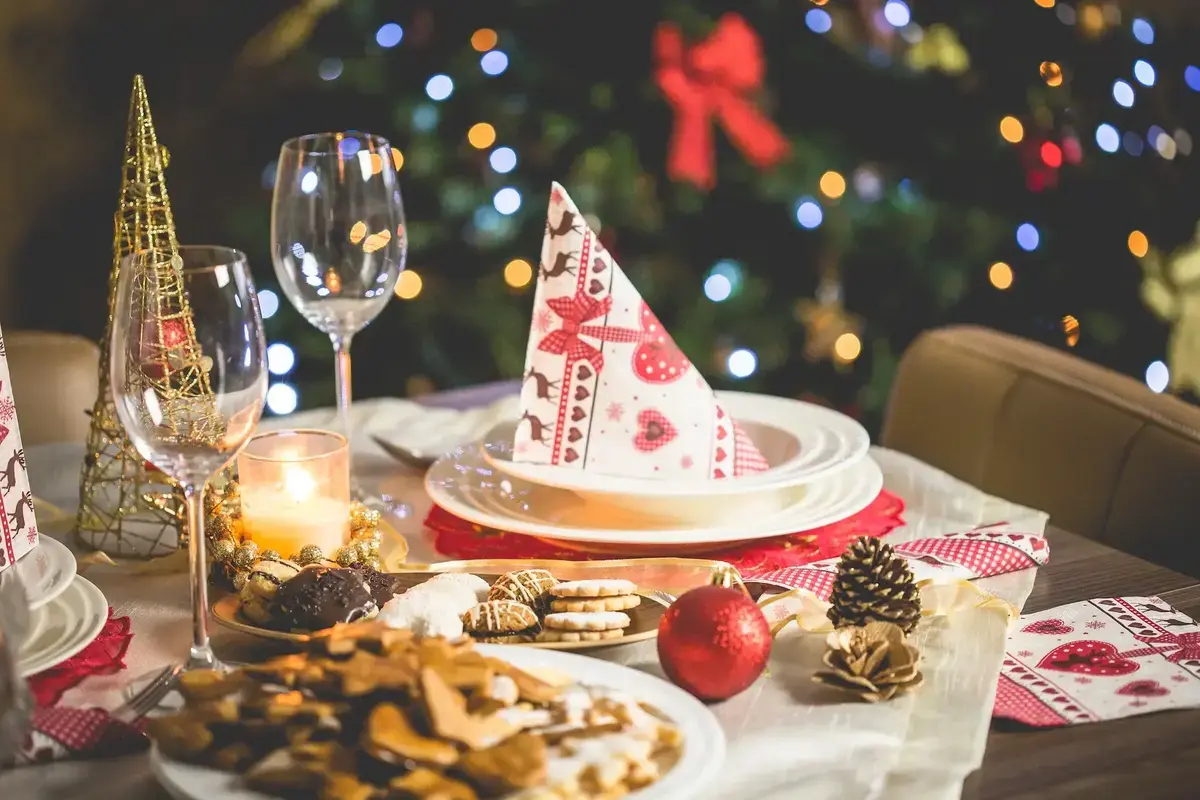How Christmas Eve Is Celebrated in Colombian Cities

There are two points in December at which the Christmas season could start in Colombia. The chronologically first point is on the 1st of December and is isolated to Medellin. It’s the Alboradas and it’s when the night sky is lit up with fireworks. This is a divisive practice because of safety concerns and the noise involved.
The next point at which Christmas is meant to start is on the 7th of December, Dia de las Velitas (The Day of the Candles), when people light candles in front of their homes or on their balconies.
Regardless of when the Christmas season starts, Colombia is a predominantly Catholic country. In fact, Latin America as a whole is predominantly Catholic thanks to the Spaniards.
As such, Christmas is a religious holiday. Sure, imagery of Santa, elves, reindeer, and all that may be present to some extent. But across Colombian cities, the holiday will have a decidedly religious bent to it.
In fact, the religious tradition of Colombia is so strong that it’s Baby Jesus who supposedly delivers presents, not Santa Claus.
So, if you’re not overly spiritual and you want to start dating a Latina, you’re going to have to get good at acting.
Speaking of Christmas and Colombia, there are a lot of places across the country to spend the holiday. You may know about magical realism and the country’s history, but seeing how they celebrate the night before Christmas will show you a different side of Colombian culture.
Colombian Culture and Food
First up, Christmas Eve – Noche Bueña in Spanish – is a time for feasting. The feast itself is called Cena de Navidad. The night just before Christmas Day is a time for Colombians to celebrate and they celebrate by eating a variety of food and in copious amounts. Being able to eat copious amounts of food is one of the many benefits of dating a Latina.
But what sort of food can you expect to nosh on when you’re in Colombia? Well, there’s quite a lot that you can put on your plate.

Appetizers
Buñuelos are deep-fried cheese fritters rolled into balls. They have a crunchy exterior, but the interior is soft and bready. While they’re usually a Christmas food, they can be eaten any time of the year.
Hojuelas are what you get when you take batter and fry it flat and dust with sugar.
Colombians have a taste for sweet things and nothing satisfies that craving on Christmas Ever quite like Dulce de Nochebuena. What is this? This is when you take figs, papaya, and lime. Then you drizzle all of it in syrup. This is usually served with the aforementioned buñuelos and hojuelas as well as other foods.
The Main Course
The main course of the night, however, will probably be lechona. This is a whole pig stuffed with vegetables, herbs, and spices. If lechona is not served, roasted turkey or slow-roasted pork shank doused in beer may be present as an alternative.
The main course can be served with rice, potatoes, bread, or salad.
The Dessert
Once the main course is served, there’s the dessert to get to and in Colombia, that dessert might be natilla, a sweet custard with panela, which is unrefined sugar cane. Needless to say, it is incredibly sweet.
If it’s not natilla, then it might be arroz con leche, which is rice pudding made with vanilla, raisins, and cinnamon.
The Spiritual Part of the Celebration
Remember the part about Colombia being Catholic? That’s not just lip service. Catholicism is woven into Colombian society. It also shapes many of their Christmas traditions, among them Novena.
Once the Christmas meal is done and digesting in everyone’s bellies, people go to mass at midnight. But that’s not the end of the festivities. Some people stay up all night, so Christmas Day itself is spent relaxing and maybe recovering from a hangover.
From the 16th to the 24th of December, Colombians pray their novena to Jesus, Joseph, Mary, and the Wise Men. Because Jesus, Joseph, and Mary were believed to have sought refuge in a different location each night leading up to the night in the manger, the novena is to be prayed in a different house every night.

There are also games called the Aguinaldos. One game is called Tres Pies (three feet), where one player tries to put their feet between another’s without the other noticing. Another game demands that the player keep a straw in their mouth for the whole day. There’s also a game called stolen kiss, which is exactly what it sounds like.
Another popular game is called Si o No, where the object is to not say the words Si or No.
There are also nativity scenes. Some of the scenes will be complete, others will have Mary, Joseph, and the Wise Men, but Baby Jesus will be noticeably absent. It is not until midnight strikes on the 25th that the scene is completed and Jesus is placed in the manger.
You can also expect multi-colored fireworks to light up the sky, even if the fireworks are mostly illegal.
There’s one tradition that’s practiced in Colombia but is also universal. That’s the anticipation. Colombians anticipate Christmas. They wait for it. They have midnight countdowns like they do for New Year’s in the United States.
There are a lot of traditions that are celebrated during the Christmas season in Colombia. Some, like the display of lights in Medellin, are celebrated throughout the season. Some, like the Cena de Navidad, are celebrated on a specific date. But the traditions themselves, while they are important, are not the end all/be all of the season.
Religious reasons aside, many people use the season as a reason to gather and spend time with their families. They eat, they drink, and they make merry. That’s not a tradition that’s exclusive to Colombian cities, but it is treasured there. So while the food and the other traditions might be somewhat unfamiliar to you, there’s at least one for which you should have some context.




























